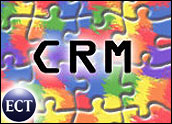
We’ve all seen the promotions: Brand X donates a portion of its sales to a worthy cause, which can be anything from support for a local school to breast cancer research. It’s called “cause-related marketing,” and it is rapidly becoming one of the best ways for businesses to embroider their brands, writes Alden Keene & Associates principal Paul Jones in his blog by that name.
“Cause-related marketing, or CRM, is a way to link nonprofits and corporations in a way that benefits both,” Jones told CRM Buyer. “For corporations, it is a way to do good and increase sales at the same time.”
It has been steadily growing over the last five to six years, he said. Besides building a brand and increasing sales, it is also a form of relationship-building with a customer. “People like the feeling they get when they buy a product that will help a cause at the same time.”
In his post, “Public Policy Cause-Related Marketing,” Jones points to news that Oliver’s Artisan Breads in Los Angeles will donate 10 percent of net profits from its store line of breads to the Bread for the World Institute, “the first case of a CRM campaign benefiting an advocacy and public policy charity I can think of.
“By contrast, money from cause marketing campaigns at Susan G. Komen goes to breast cancer research and breast cancer education and awareness. When you clip Box Tops for Education the money goes to local schools.
“It probably goes without saying that it takes a very particular kind of sponsor to engage in a cause-related marketing campaign for a public policy charity.”
Analzying the Platform-as-a-Service Model
By now, anyone involved in the CRM market can recite the business case for a Software as a Service application. The return on investment for Platform as a Service, though? There’s still plenty of room for debate. In CIO’s Guide to On-Demand,Ryan Nichols takes a stab at delineating the parameters of this concept.
One frequently heard claim is that nobody can build a “big” business using someone else’s platform, he notes in the beginning of his post — and then he quickly debunks it.
“We don’t buy this argument. Lots of big businesses have been built using the platform capabilities of others. To extend the standard analogy comparing on-demand technology platforms to the electric grid, lots of great companies have been built without building their own ‘power plants.’
“The Oracle database platform provides another set of examples. There’s no reason for this to change. Plenty of great businesses will be built throughout the technology value chain, including platform providers, tools providers, and platform consumers that deliver business value directly to the customer.” The real question, Nichols says, is this: “Is the pie big enough to build great companies on a slice of it?”
For a lot of reasons, Nichols expects to see the current US$300 billion IT on-premise ecosystem transform into a $100 billion on-demand industry.
Digium’s Path to Profits
Many open source companies are still struggling to line up resellers because how to make money off of open source is still an open question, writes Joe Panettieri at“Digium Lines Up 250 Channel Partners for Asterisk.”
Not so, though, for Digium, the poster child for Asterisk — the open source IP PBX (private branch exchange) platform. In its case, more than 250 partners are banging on the company’s door because it really has built a better mousetrap, Panettieri writes.
“Similar to Linux’s impact on the operating system market,” he continues, “Asterisk is disrupting the traditional PBX market — which is filled with legacy, proprietary, expensive telephony platforms.
“Using Asterisk, solutions providers can dive into the open source code, make specific customer modifications, and integrate IP PBXes with open source CRM and call center software. Or, less sophisticated partners can simply resell Digium’s Asterisk products with little or no tinkering at all,” Panettieri suggests.
The kicker, though, is Digium recently inked a global distribution deal that could raise Asterisk’s visibility worldwide — and it has unified its channel program across its base of Digium and Switchvox resellers, he writes.
Short Takes
A handful of grocery chains — including PriceChopper and Wegmans — have started using CRM data to alert customers to product recalls, notes Evan Schuman, a former retail technology editor, in his latest blog post, “PriceChopper Using CRM To Alert Customers To Recalls.” It’s yet another reason why customers will want to use their loyalty cards, he writes.
The program at PriceChopper, a 116-store grocery chain in New York, Connecticut, Massachusetts, New Hampshire, Pennsylvania and Vermont, is especially interesting, as it uses an automatic phone-calling system to instantly and simultaneously reach out to impacted customers, he says. “Last month, the system was used to reach out to some 12,000 customers because of a recall of Samuel Adams beer due to glass fragments.”























































